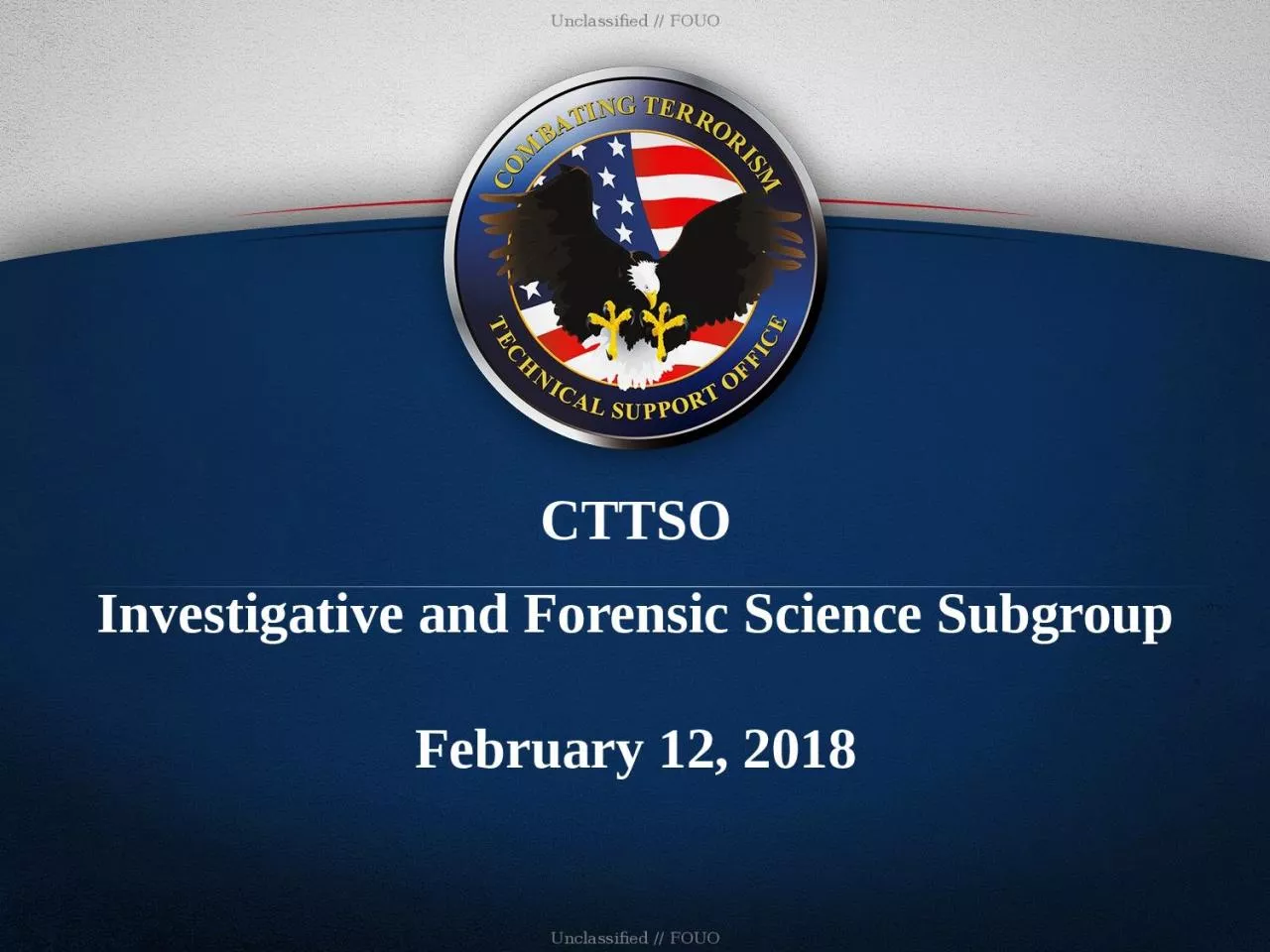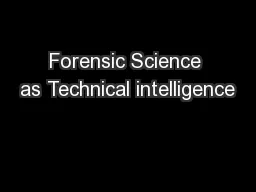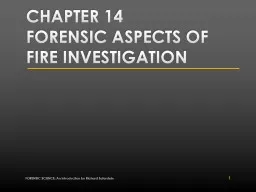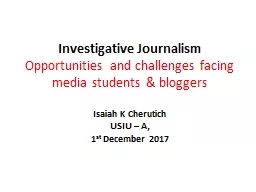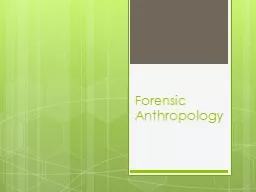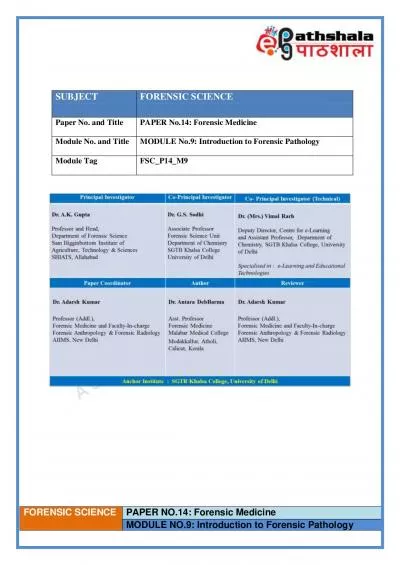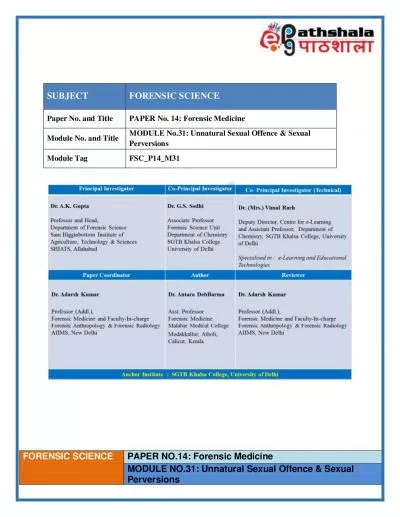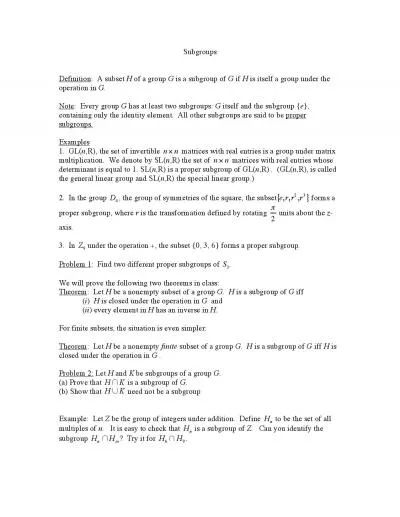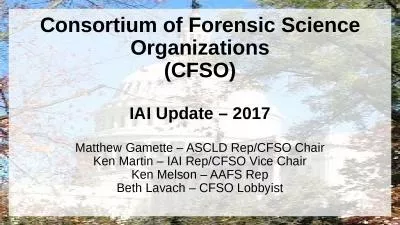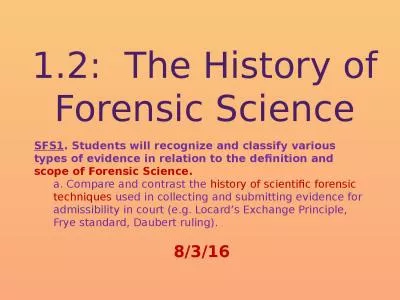PPT-CTTSO Investigative and Forensic Science Subgroup
Author : smith | Published Date : 2024-03-15
February 12 2018 CTTSO Mission Identify and develop capabilities to combat terrorists and irregular adversaries and to deliver these capabilities to DoD
Presentation Embed Code
Download Presentation
Download Presentation The PPT/PDF document "CTTSO Investigative and Forensic Science..." is the property of its rightful owner. Permission is granted to download and print the materials on this website for personal, non-commercial use only, and to display it on your personal computer provided you do not modify the materials and that you retain all copyright notices contained in the materials. By downloading content from our website, you accept the terms of this agreement.
CTTSO Investigative and Forensic Science Subgroup: Transcript
Download Rules Of Document
"CTTSO Investigative and Forensic Science Subgroup"The content belongs to its owner. You may download and print it for personal use, without modification, and keep all copyright notices. By downloading, you agree to these terms.
Related Documents

